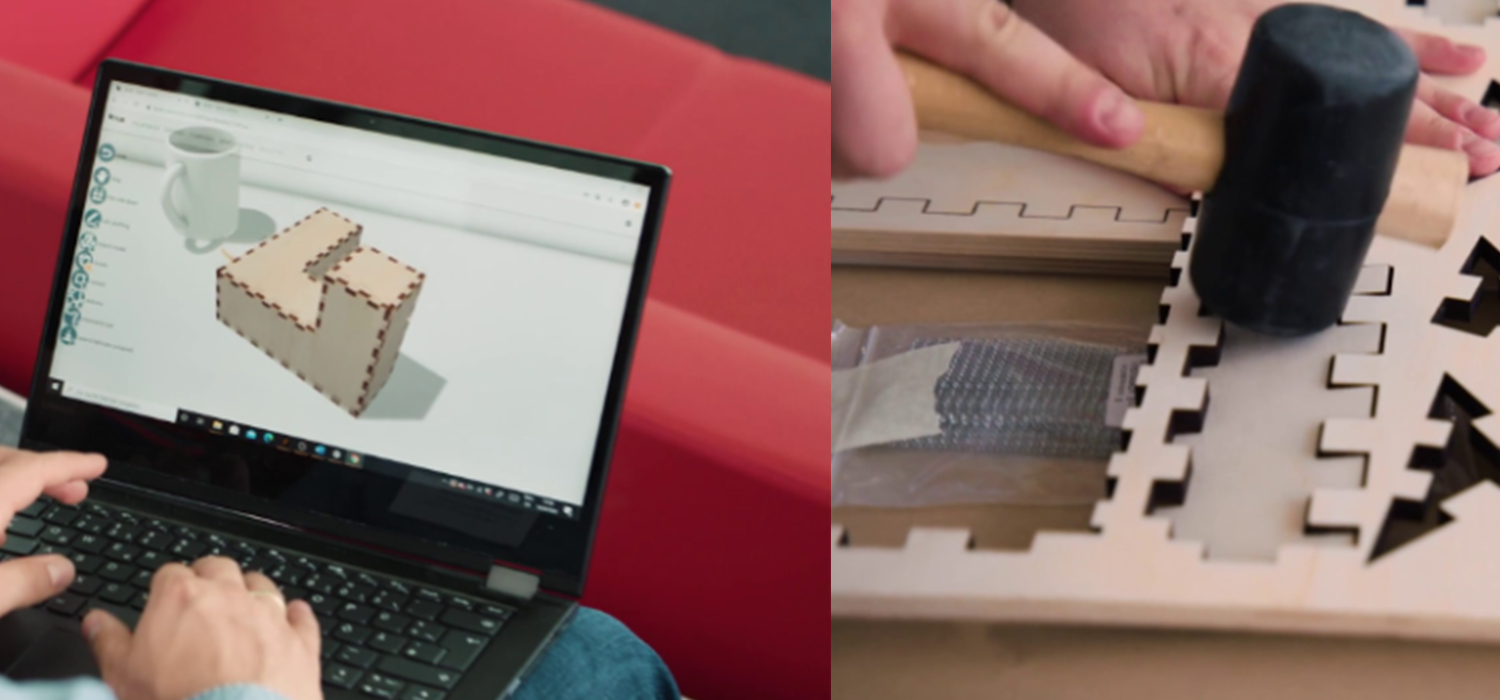How the Hasso Plattner Institute’s Kyub system brings digital and practical learning together
Students designing a chair, a guitar or a loudspeaker during a single lesson, then working on them as a 3D model, cutting pieces out of wood with a computer-controlled laser cutter - are these the lessons of the future?
The Hasso Plattner Institute’s interdisciplinary Kyub system could make that happen. Kyub has little to do with classroom-style teaching, textbooks and classical learning concepts. A software helps the pupils to design an everyday object in digital form. The corresponding components are cut out using the laser cutter, controlled by the software, and built by the students themselves in the classroom. Complex learning content thus becomes tangible and can be processed using one’s own initiative. This also promotes manual dexterity as well as thinking and digital competence.
But the interdisciplinary lesson is not yet over: the class learns from working on its own particular objects. What does the guitar’s sound box sound like and what happens to the sound if the body is enlarged or reduced? This is where knowledge about physics can be made tangible, but the teachers can just as easily focus in their lessons on design, a basic understanding of engineering or basic scientific methodology.
From digital consumption to development and production
Prof. Dr. Patrick Baudisch, who heads the Human Computer Interaction department at the Hasso Plattner Institute, is responsible along with his team for the development of the overall Kyub system and is currently working on a pilot project with the Grace Hopper Comprehensive School in Teltow. The new form of learning is being directly integrated into the school routine, with training, software maintenance and the implementation closely monitored by the team from the Hasso Plattner Institute.
“We don’t just want to make the pupils into consumers of digital media because we also want to teach them to design and produce. By doing this, we are actively bringing analogue and digital together, and this combination is central for us to achieve the desired goal,” Baudisch says about their approach. “Digital doesn’t mean that one knows how to use TikTok inside out - digital means actively participating in the digital world. We give the pupils the necessary tools and therefore the opportunity to develop further.”
The class receives a grounding in digital literacy so that they can operate the programme and also configure their own ideas. When then assembling the individual parts, it’s all about them being able to check the functionality of their own design. That’s when the digital idea becomes concrete.
The Kyub system consists of three main components: a curriculum of challenging projects, a software that works via all the common web browsers and, then the laser cutter that accurately cuts out the elements to size.
One lesson, one project
What is special is the speed with which the Kyub system allows projects to be implemented. This is essential for its deployment in schools because you only need a single lesson to go from the initial design to the finished chair.
“The speed of the system plays a major role. It not only allows pupils to try out lots of things, but, more importantly, to work through the sequences of challenges we’ve created. For example, before the pupils can design and construct their own guitar, they work their way through a series of seven stringed instruments over the course of 1-2 lessons when the individual elements of a guitar are gradually introduced and understood. This allows the learners at the end to design and construct their own guitar based on their newly won expertise,” Baudisch says.
The curriculum is enhanced by the students varying the content with the help of the programme and putting what they have already learned into practice – that’s how innovation can be achieved. How about, say, a twisted guitar neck? What kind of statics does a chair need to function as such?
Teachers can thus use the Kyub system to enhance specific parts of the curriculum and use real-life examples to create an innovative teaching experience for their pupils. The focus on sound waves or statics leads to learning units in physics. And one needs mathematics and a knowledge of engineering for statics. But design or historical aspects can come up just as well. The class can avail itself of the programme’s automatic presets depending on how one combines Kyub and the classical curriculum.
The teachers then decidewhich challenges the students want to set and where the system may help. For example, if the course’s objective is primarily to create an attractive chair design, Kyub will then independently add the necessary reinforcements during the design process so that the chair can function in an everyday situation. If, however, the syllabus is focusing on aspects of statics, then it’s precisely these automatic mechanisms which can be deactivated so that it will soon be apparent in practice as to whether the chair is fit for use in the first place. Whoever is faced with difficulties must actively search for solutions. That’s closer to real life than what the usual lessons can otherwise do.
Prof. Dr. Patrick Baudisch and his team at HPI welcome the opportunity to share their experiences and enter into an exchange with other schools. You can contact them at the following email address: schule@kyub.com.
Kyub, a day with teachers from the Grace Hopper Comprehensive School in Teltow:
https://www.youtube.com/watch?v=IgtUjycP5hY
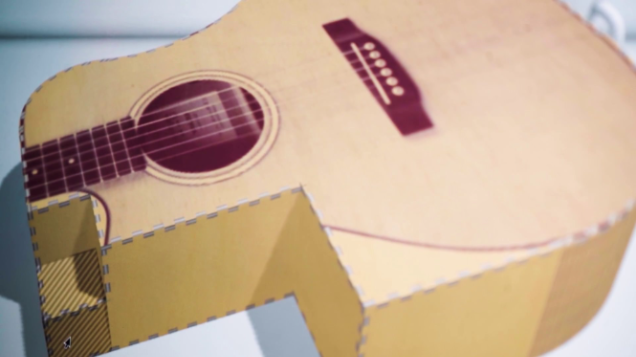
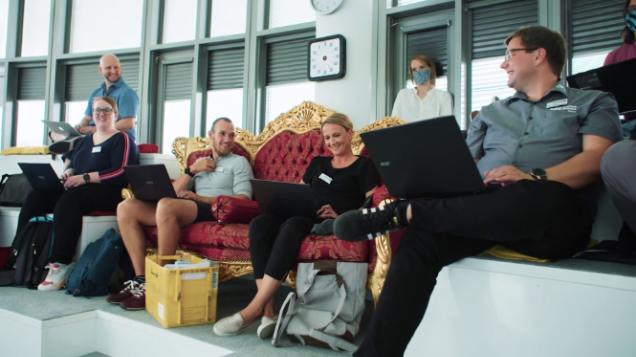
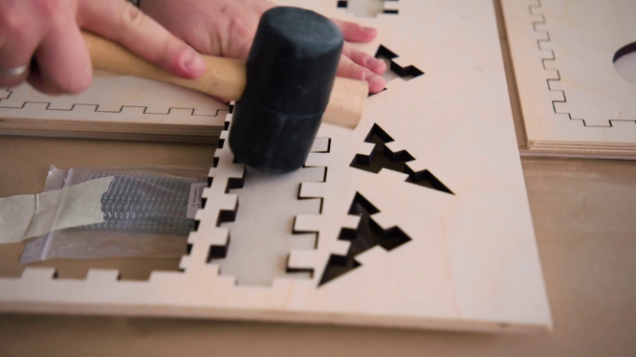
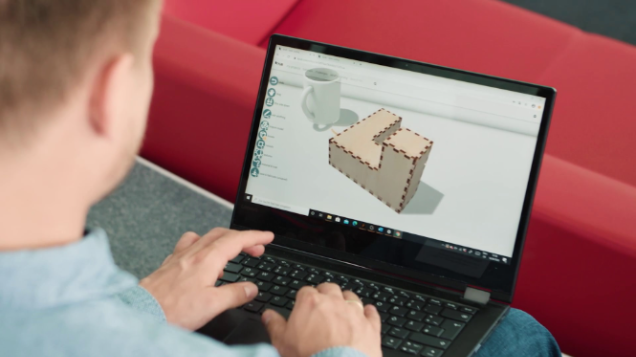
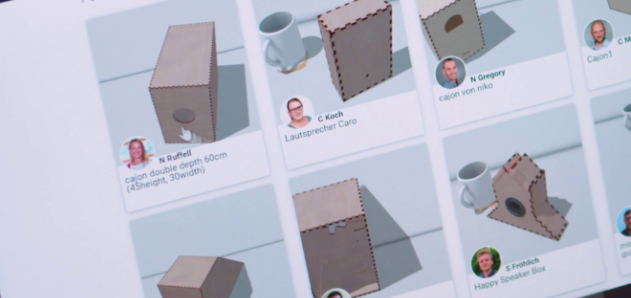

About MTH Blog
The media technologies of the future are already being used today – not only in the entertainment sector, but also in a wide variety of industries. Christine Lentz meets up with tech enthusiasts, established companies and researchers for our monthly MediaTech Hub Potsdam blog to tell the stories behind the innovative business models.
More Blog ArticlesAbout MTH Blog
The media technologies of the future are already being used today – not only in the entertainment sector, but also in a wide variety of industries. Christine Lentz meets up with tech enthusiasts, established companies and researchers for our monthly MediaTech Hub Potsdam blog to tell the stories behind the innovative business models.


